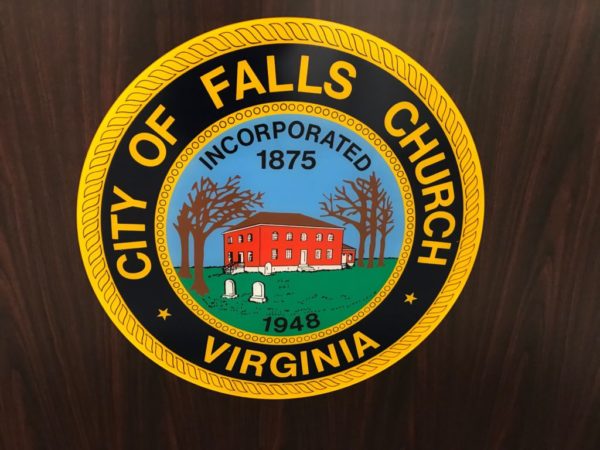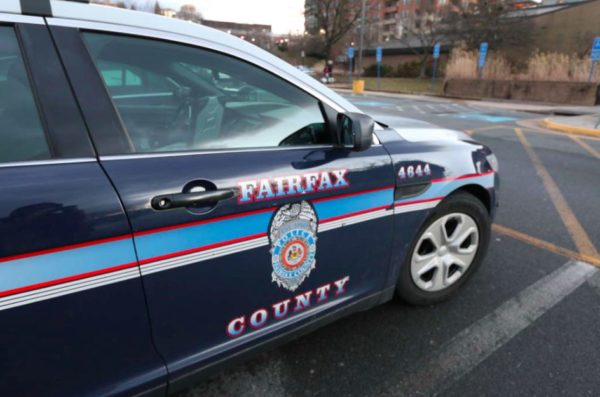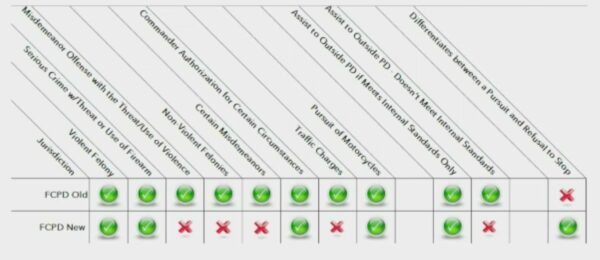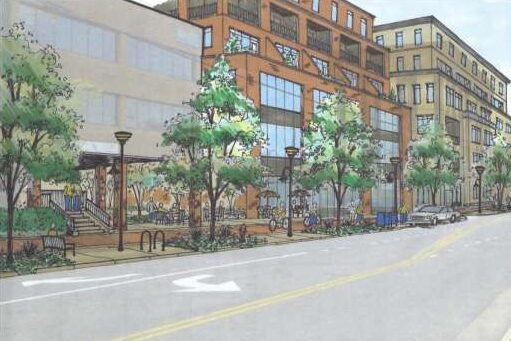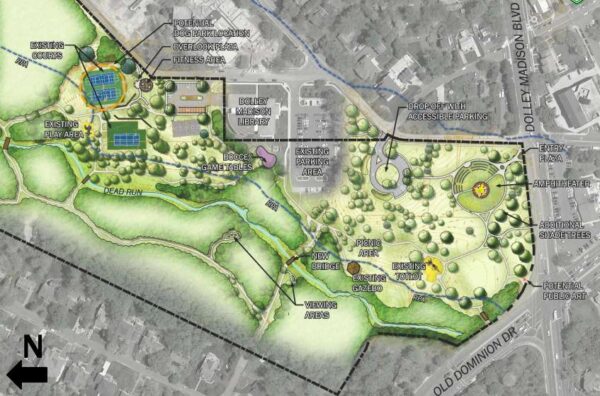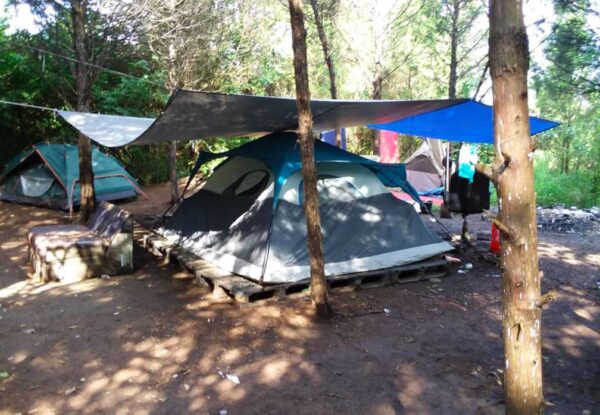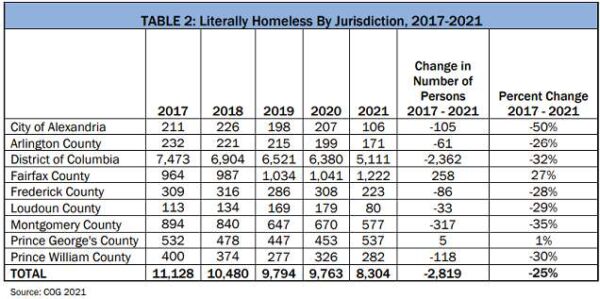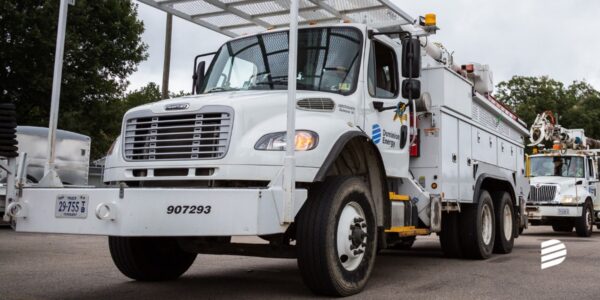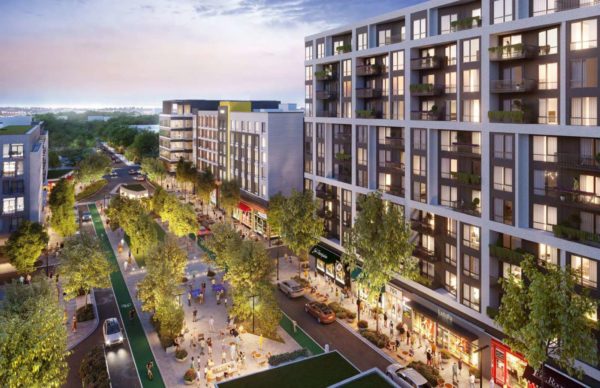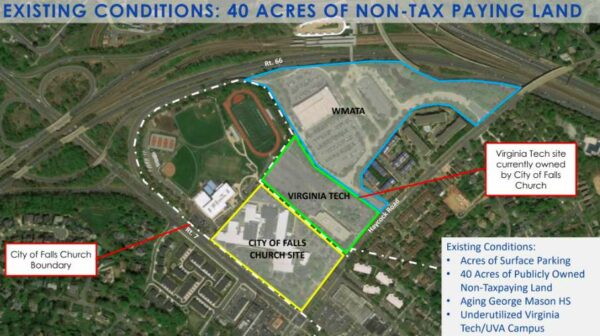
Concerns raised by both local citizens and Fairfax County Planning Commission members over the impact of a new West Falls Church Metro station development plan prompted the commission to defer a vote on the project on Wednesday (June 16).
The West Falls Church Metro station is one of the most underutilized stations in the Metro system, and the Washington Metropolitan Area Transit Authority has enlisted developer EYA to turn the site into a mixed-use development.
The plan was endorsed by a task force appointed by Dranesville District Supervisor John Foust, but at Wednesday’s public hearing, several nearby residents and civic association representatives spoke out with concerns about the project — though others praised it as an improvement over the existing space.
“There are several focused criticisms and concerns raised about the current proposal by the [McLean Citizens Association] and by some of the nearby residents, who feel that we need to go further than this plan suggests,” said Dranesville District Planning Commissioner John Ulfelder.
Much of the criticism focused around the effect of traffic brought by the project on nearby roads that the county acknowledges were not made to support a sizable increase in density.
Braddock District Commissioner Mary Cortina said she was concerned that the plans fail to adequately address pedestrian safety.
“The text I see in the pedestrian area talks about convenience and comfort: it doesn’t talk about safety,” Cortina said. “This is life and death. We have to call out safety where we have pedestrian sections because that should be a priority.”
County staff said a follow-up study will look at identifying funding for pedestrian safety and traffic improvements for nearby streets that are outside of the scope of the current project but will still likely be affected by it.
“Haycock Road and Route 7 prevent a lot of people from crossing safely [to the Metro],” said Tim Kutz, a transportation planner with the Fairfax County Department of Transportation. “That’s something we’re going to look at further in the transportation plan looking at the surrounding neighborhood. It’s important that people have an opportunity to bike and walk safely…A lot of older neighborhoods don’t have sidewalks, don’t have crosswalks, and don’t have connectivity.”
Kutz said the funding for those future pedestrian improvements is something the county would “have to explore” later.
Some nearby residents commented that they support the project, notably Cheryl Smith, who represented the Gates at West Falls Condominiums and served as the majority vote for the West Falls Church TSA Task Force.
Smith argued that the project would be a net increase in terms of quality of life for those surrounding the project, but others disagreed.
“The WMATA site is not suitable,” said Adrienne Whyte, representing the recently-launched Reclaim Fairfax County group. “This is a lovely but limited fiction.”
Whyte said the West Falls Church Metro station is intended to be a neighborhood-serving station rather than a site for significant developments.
In the middle was Phil Cooke from the McLean Citizens’ Association, who said the MCA supported the developer’s plans, but with the provision that the county must further study ways to address the potential consequences of increased density and congestion.
“[This] will strain Route 7 congestion further than it already is,” Cooke said. “Folks will seek to avoid Haycock and Route 7 and exit the back way, increasing local congestion.”
At Ulfelder’s suggestion, the board voted unanimously to defer its decision on the comprehensive plan amendment to the June 30 meeting, to collect further feedback and reflect on public comment before the Commission votes on the project.
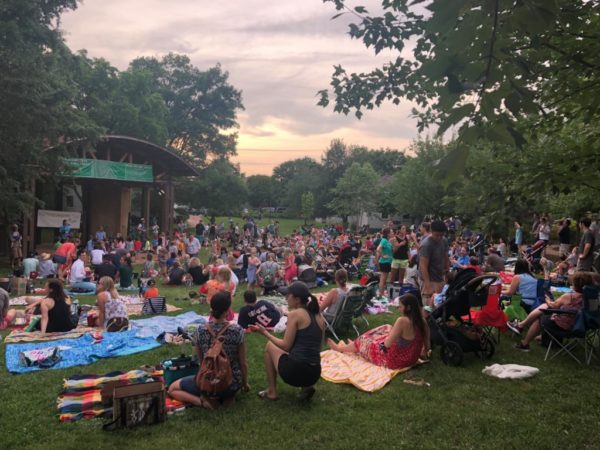
(Updated at 7:05 p.m. on 7/1/2021) With COVID-19 vaccines now widespread, some outdoor summer concerts and music festivals put on hold last year have sprung back to life. Across the Tysons area, there are several options for locals looking for free outdoor music.
Tysons
The Boro (8350 Broad Street) at Tysons is hosting a series of free outdoor concerts every Thursday from 5:30-8 p.m.
- June 17: Jeff Herbert (this concert will run from 5-7:30 p.m.)
- June 24: Zach Cutler
- July 1: Justin Trawick
- July 8: Hand Painted Swinger
- July 15: Deanna Dove
- July 22: Elizabeth & Phil of The Breakaways (Acoustic) Duo
- July 29: Practically Einstein
- Aug. 5: Desert Shade
- Aug. 12: Moose Jaw
- Aug. 19: November Morning
- Aug. 26: Rock Creek Revival
- Sept. 2: David Thong Band
Nearby, Tysons Corner Center has ongoing live outdoor entertainment through October, with local musicians performing Thursdays and Fridays from 4-7 p.m. as well as Saturdays and Sundays from 2-7 p.m.
Vienna
The Town of Vienna is hosting a “Summer on the Green” concert series on the Town Green every Friday and Sunday through August.
Concerts begin at 6:30 p.m. and are roughly an hour and a half in length. Alcohol is not permitted at the concerts, and attendees are asked to leave their pets at home. They are encouraged to bring their lawn chairs or blankets, though.
- June 25: US Navy Band Cruisers
- June 26: Musical Tour of the Freedom Struggle through Gospel Music (starts at 6 p.m.)
- July 3: Justice for All Concert (starts at 6 p.m.)
- July 9: US Army Band Swamp Romp
- July 10: Women Rock featuring Cathy Ponton King (correction: This concert is part of the Town of Vienna’s Liberty Amendments Month events celebrating the 19th Amendment, not the “Summer on the Green” series.)
- July 16: Sarah Bennett Swanner Band
- July 23: Shenandoah Run
- July 30: Fat Chance
- August 6: The Rockits
- August 13: US Navy Band Commodores
McLean
The McLean Community Center is hosting its annual Summer Sunday Concerts in the Park, with concerts starting at 5 p.m. on Sundays at 1468 Dolley Madison Blvd.
- June 16: Alphabet Rockers
- June 23: Jazzy Ash and the Leaping Lizards
- June 30: Sonia de Los Santos
- July 7: DuPont Brass
- July 14: Frontiers Journey Tribute Band
- July 21: Justin Trawick and the Common Good
- July 28: Slippery When Wet: The Ultimate Bon Jovi Tribute
Falls Church
The City of Falls Church’s free outdoor concert series is returning for its 28th year after a pause last year due to the pandemic.
A partnership between the City of Falls Church Recreation and Parks Department and Village Preservation and Improvement Society (VPIS), the free concerts run every Thursday at 7 p.m. at Cherry Hill Park (312 Park Avenue).
Guests are encouraged to bring a blanket or folding chair.
- June 17: Falls Church Concert Band (instrumental)
- June 24: Nomad (classic rock)
- July 1: Flowerbomb (alternative rock)
- July 8: Moonshine Society (blues)
- July 15: Andrew Acosta (roots)
- July 22: Lil’ Maceo (funk)
- July 29: Big Tow (rock and blues)
Photo via Town of Vienna/Facebook

(Updated 6/11) A plan to overhaul one of the Metro system’s least-used stations is headed to the Fairfax County Planning Commission next week, but surrounding the new project is a complex network of advocates, issues, and jurisdictional questions that’s built Katamari Damacy-style over the last two years of public engagement.
As the project to transform the area around the West Falls Church Metro station starts to move forward, advocates and opponents alike are already starting to look at the next stage of transportation questions down the road.
The proposed comprehensive plan amendment aims to turn the area near the West Falls Church Metro station into a mixed-use district with office, retail, and residential uses more typical of areas near Metro stations.
With the withdrawal of Virginia Tech taking the filling out of the development sandwich, the two pieces of the plan are the City of Falls Church parcel, with mixed-use developments around a central stretch of park and open space, and the area adjacent to the Metro station.
The first phase of the project is scheduled for a planning commission public hearing on Wednesday (June 16) before going to the Board of Supervisors on July 13, after which the Washington Metropolitan Area Transit Authority’s development team will still need to get specific plans approved.
So far, most of the public discussion about the project has involved transportation.
Evan Goldman, executive vice president of acquisitions for site developer EYA, says an expanded roadway parallel to the crowded Haycock Road should help relieve some of the local traffic, along with a new exit off I-66 running directly to the West Falls Church Metro station.
“There’s no question that what is being built here is 100% better than what is there today,” Goldman said. “This will have dedicated bike lanes on almost all the streets.”
Goldman says the concerns raised so far have mainly focused on the single-family residential neighborhoods near the development, where there are insufficient sidewalks in some places.
“It’s specifically because of the location, surrounded by single-family neighborhoods in an area where there are existing traffic issues,” Goldman said. “The density is sized for the capacity of what the traffic can handle to make sure we’re trying to be respectful of neighbors in terms of height and density.”
Goldman says lower density requirements will also allow more of the buildings to be delivered together, so the project can be brought online all at once.
The reaction from surrounding neighbors to the project has been mixed.
Paul Rothstein, one of the representatives from nearby residential development The Villages on a task force to review the project, has argued that the increased density will pose a hazard to nearby residents, who will feel the ripple effect of traffic from the site on streets not built to handle it.
“Even though I view pedestrian infrastructure remediation as mostly Fairfax County’s responsibility and not [EYA’s], your development will increase traffic in the surrounding areas and increase the risk to pedestrians,” Rothstein wrote in a letter to the developer.
Rothstein has been pushing for EYA to endorse a McLean Citizens Association resolution on the project, which notes that the traffic issues at the site remain unresolved.
“To quote the father of the injured child, ‘I also hope that the developers, who emphasize building walkable communities, will support the MCA resolution and thus make sure that walkability in existing communities does not deteriorate as a result of new communities,'” Rothstein wrote. “Adoption of the MCA resolution still will permit substantial development at the same time as promoting the safety of your neighbors, including their children.”
Goldman says current plans for the development include dedicated crossings on Haycock and Leesburg Pike, but Rothstein’s concern is for neighborhood children walking to Haycock Elementary along more crowded streets.
Goldman says EYA’s obligations for traffic improvement are primarily at the development site and not the broader region around the station.
Cheryl Sim, another nearby resident, agreed that, by and large, EYA is not responsible for the entire area, but it still has some obligations.
“The County and VDOT have long ignored this area and its needs,” Sim said. “However, EYA fronts for WMATA in this exercise. And, WMATA, based upon its Joint Development Guidelines and Principles from May 2020 place the onus on the developer.” Read More
The City of Falls Church government is grappling with whether to let restrictions eased on businesses over the last year stay permanent, be reverted entirely, or somewhere in between.
At a work session yesterday (Monday), Planning Director Paul Stoddard walked the city council through the options that are currently being considered.
“[The recommendation] is to keep temporary allowances in place until the business community at large has more time to understand how business is going to resume as the economy comes out of the pandemic and things get back to the new usual,” Stoddard said. “Is it going to look like things were before the pandemic? During the pandemic? Some blend of the two?”
Three of the biggest temporary changes that went into effect last year are:
- Allowing for additional signs and banners to support carry-out operations
- Permitting carry-out orders where not otherwise allowed
- Repurposing surface parking spaces to be used as outdoor dining areas
According to Stoddard, there are three longer-term solutions being considered.
The first is a “No Build” option where the city would revert back to pre-pandemic restrictions, though Stoddard said he thought it unlikely that city leadership would see that as the right approach.
The other extreme is by-right allowance, which would allow businesses taking advantage of the loosened restrictions to continue to do so in perpetuity.
Stoddard says this could bring its own problems, though, potentially complicating the city’s parking minimums and raising questions about how the by-right allowances would exist alongside new and proposed uses.
The third option — and the one Stoddard said staff is likely to recommend — is utilizing special use permits (SUPs). Stoddard said SUPs are already used for a variety of unconventional uses, and the application process gives the city the right to approve them on a case-by-case basis, with potential for staff to implement site-specific measures.
For now, city staff recommends that the current lax provisions be extended through January 2022, allowing businesses to take full advantage of outdoor seating through the fall and without any legislative change getting lost in the muddled holiday schedules in November and December.
Stoddard said the extra time will also help the city figure out what the long-term economic situation will look like for local businesses as more people get vaccinated.
Councilmember Debbie Hiscott agreed, saying that the city’s economic recovery is not up to a healthy level just yet.
“Business revenue is going in the right direction, but it’s not there yet,” Hiscott said.
(Updated at 7:30 p.m.) Fairfax County is cutting back on what’s allowed to start a police vehicle pursuit, including eliminating the leading cause of pursuits.
At a meeting late last month with the Board of Supervisors Public Safety Committee, Police Chief Kevin Davis outlined some of the changes that he said will help bring Fairfax County in line with other regional jurisdictions.
“It gets to the basic question: is it worth it to pursue this person,” Davis said. “When we looked at our policy, we found that it was not consistent with surrounding jurisdictions.”
Davis said the department has reduced the number of “pursuit opportunities” including for traffic violations, which were previously the biggest cause for vehicle pursuits.
“That’s our largest number of pursuits,” Davis said. “That will significantly reduce the number of pursuits.”
The change comes as increasing urbanization in Fairfax County creates concerns that pursuits are more likely to lead to injuries for those involved in a pursuit or bystanders.
Five possible reasons for pursuit are eliminated under the new regulations:
- Misdemeanor offense with the threat/use of violence
- Non-violent felonies
- Certain misdemeanors
- Traffic charges
- Assistance to outside police that doesn’t meet FCPD standards
That last change means Fairfax County police officers will not join in a pursuit if the cause of pursuit falls outside of the new guidelines.
Major Robert Blakley said this brings Fairfax County in line with most of its neighbors and will make it easier for police to understand.
“We wanted to increase the clarity for our supervisors and officers, who have to make these split second decisions,” Blakley said, “so they don’t have to recall 47 pages but can hone in on a few key objectives.”
Dranesville District Supervisor John Foust praised the change.
“This is so much better than the current [policy],” Foust said. “We’ve had some bad incidents. This is going to save lives, so I’m really excited about it.”
Springfield District Supervisor Pat Herrity, on the other hand, had reservations about the change: worrying it would tie police’s hands and keep them from stopping dangerous behavior.
“My big concern is always the unintended consequences…where we can’t pull over the loud cars anymore proliferating throughout the county,” Herrity said. “What I worry is, when you take this away, the criminals know the laws as much, if not better than, we do. You look on the TV and you see groups of ATVs rolling through National Harbor, endangering civilians, and they’re not doing anything other than traffic violation so there’s no pursuit.”
Davis said the issue had come up as much or more than any other over the last several months, adding that there’s room in the policy for commanders to use discretion to authorize pursuits if deemed necessary.
“We’re not going to ignore those behaviors because they are very dangerous, and if they fit the pursuit criteria, it will be addressed accordingly,” he said. “We will have to find other creative ways, whether with aviation or cameras, to identify these folks because it is very dangerous.”
The FCPD public affairs office said the department is planning a public input session next week to allow for more discussion on the topic, though no date has been decided yet.
One of the longest-running stories on Tysons Reporter has been plans to overhaul McLean’s downtown. The aim is to make it more vibrant and active, but critics of the plan say it still misses the mark on parking and stormwater management.
The McLean Community Business Center plan divides the 230 acres of central McLean into a few zones with greater residential density opportunities than currently exist — the idea being to incentivize more development in exchange for those developments including more public open space and community amenities.
The expanded density will allow for up to 3,850 residential units in McLean, more than triple the 1,280 units currently built in that area.
Robert Jackson, president of the McLean Citizens Association, said that in spite of some changes, the MCA still opposes the draft plan, due to a lack of specificity around water management requirements and changes that will shift the emphasis to underground parking garages, rather than surface parking.
“Some changes made, and we are pleased with some of them, but [those] two major issues remain unaddressed satisfactorily,” he said at a public hearing held by the Fairfax County Planning Commission on May 26.
Other concerns that emerged during last week’s public hearing included calls for more assurance that the new development won’t add to McLean’s flooding issues.
“The focus needs to address flooding and streambed erosion concerns,” local citizen Barbara Ryan said, “particularly as we are seeing downstream erosion in Pimmit Run.”
After the public hearing, the planning commission deferred its decision on whether to recommend approval of the proposed comprehensive plan amendment to June 9. The plan will then go before the Board of Supervisors on June 22.
Image via Fairfax County
By 2023, McLean Central Park (1468 Dolley Madison Boulevard) could be completely overhauled with a suite of new recreational amenities, though there’s some back and forth in the community over what exactly those should be.
The Fairfax County Park Authority is currently gathering public input on what the community hopes to see from a revitalized McLean Central Park, and at a meeting on Monday (May 24), local residents shared their hopes for what could be included, as well as concerns for what the overhaul would mean for nearby residents.
The plan is to reconfigure much of the 28-acre park to include new recreational facilities, an amphitheater at the southern end of the park, and a dog park where the tennis courts are today.
Bocce ball courts are included in the plan, but some residents expressed a hope that frisbee golf might make a return, and one resident was particularly pining for some ping-pong presence in the park.
Other callers who participated in the meeting said they were concerned the overhaul of the park would attract more cars to central McLean, potentially making local streets more hazardous.
The discussion also delved into the minutiae of the park plan, such as a comment that a proposed fiberglass bridge looked out of keeping with the wooden bridges around McLean. Paul Shirey, a manager at the Fairfax County Park Authority, said the decision to go with fiberglass was an economic one.
According to Shirey, wooden bridges might last 20 or 25 years, but a fiberglass bridge could have double that lifespan and greater durability.
County staff said the project will likely start construction in fall 2022, with 10 months of construction leading to a summer 2023 opening.
The public comment period on the park authority’s development concept will be open until June 25. Comments can be sent by email to [email protected] or [email protected].
Photo via Fairfax County
A new report by the Metropolitan Washington Council of Governments (COG) highlights some remarkable regional success in reducing homelessness. In Fairfax County, the numbers seemed to tell a different story, but county leadership says some of that is a result of the way the survey is conducted.
The annual study sends researchers across regional localities to collect a snapshot of how many residents are experiencing homelessness, and while not a comprehensive scientific count, it’s generally seen as a look at regional trends.
While neighbors like Arlington County and the City of Alexandria reported declines in their homeless population counts by 14% and 49%, respectively, Fairfax County is one of only two out of nine jurisdictions surveyed that saw its homeless count increase.
In Fairfax County, homeless population counts went from 1,041 in 2020 to 1,222 in 2021, a 17% increase. The only other D.C.-area locality to report a year-to-year rise in its homeless population was Prince George’s County, which increased by 19%.
Fairfax County claims on its website that the increase reflects an expansion of shelter capacity and services, rather than an increase in homelessness.
“The increase is primarily attributable to the increase in the community’s capacity to provide shelter with increased federal emergency funding associated with the COVID-19 pandemic, and the commendable efforts of service providers to care for unstably housed community members,” the Fairfax County Office to Prevent and End Homelessness said.
Fairfax County Board of Supervisors Chairman Jeff McKay similarly credited the increase in the count to an increase in accommodations for people experiencing homelessness.
“This year’s data indicates an outstanding effort by our Housing staff and our community-based partners to respond to the unprecedented impacts of 2020,” he said in a statement. “By providing safe housing accommodations and a wide variety of supportive services to assist our most vulnerable neighbors along the path toward housing stability, we have been able to help our entire community.”
However, since at least 2017, the homeless population counts for Fairfax County have been gradually increasing, which McKay says is also indicative of an inadequate affordable housing stock.
Released in two parts across 2018 and 2019, the county’s Communitywide Housing Strategic Plan set a goal of producing a minimum of 5,000 net new affordable housing units within 15 years. 1,800 units are currently in the pipeline, according to McKay.
In his statement to Tysons Reporter on the homelessness point-in-time count data, McKay said:
Most importantly, it indicates that our work on the issue of housing — including emergency housing — must and will continue to be a critical priority for this Board. This is an essential component of our community’s crisis response system for those who need help in regaining a safe, decent and stable housing situation.
Housing is a foundational component in achieving positive outcomes in nearly every aspect of our lives and having thousands of our neighbors experiencing homelessness or struggling to remain in their homes is not something that we as a community will turn a blind eye to. This could be any of us. There are too many circumstances beyond our control which can cause that stability to be shaken through no fault of our own.
Photo via MWCOG
Inch by inch, memo by memo, plans for Tysons’ street grid are coming together.
A new memorandum of understanding (MOU) approved at the Fairfax County Board of Supervisors meeting on Tuesday (May 18) could help clear one hurdle that’s been a thorn in the side of infrastructure plans.
As a follow-up to the June 2010 Tysons Corner Comprehensive Plan, Dominion Energy is entering an MOU with Fairfax County that will streamline a complicated part of the development process for new projects.
According to the staff report, Fairfax County has had a memorandum of agreement with the Virginia Department of Transportation since 2011 that commits VDOT to including all streets in the Tysons grid in its maintenance program.
At the same time, Dominion Energy has been working to update its electric distribution infrastructure in Tysons, a process that has been happening in conjunction with the arrival of new development.
“Developers agree to install new distribution duct banks and related equipment connecting to their proposed buildings, consistent with Dominion’s updated infrastructure,” county staff said in a report. “The facilities run parallel to existing streets, streets with modified cross-sections, or newly built streets, typically underneath sidewalk areas or parking lanes.”
Differences between VDOT’s conditions for its street maintenance program and requirements imposed by Dominion Energy for the installation of new distribution facilities has created some uncertainty for developers, the staff report says:
VDOT will not accept new streetscape areas that include easements, and Dominion requires easements where distribution ductbanks and related equipment are installed outside of vehicular lanes. Dominion is not a signatory to the 2011 MOA. Thus, there is uncertainty for developers about Dominion permitting their installations and VDOT accepting the streetscape areas above those installations for maintenance.
The newly approved MOU is intended to alleviate some of that uncertainty over where developers can and can’t build new streetscapes without stepping on the tangled web of local easements.
Under the MOU, Fairfax County will pay for future relocations of electric distribution ductbanks and related equipment that are needed by the county or VDOT, while Dominion will cover any relocations that it needs. Private developers will still pay for new ductbanks and relocations necessitated by their projects.
“This arrangement prevents Dominion from requiring easements in streetscape areas intended as county right-of-way, thereby ensuring ultimate acceptance by VDOT into its secondary street system, pursuant to the 2011 MOA,” county staff explained in its report.
VDOT has not officially signed the MOU, but the agency has endorsed it and committed to continuing to honor the 2011 agreement with Fairfax County, according to county staff.
The board of supervisors unanimously approved the motion, but at the meeting, Providence District Supervisor Dalia Palchik said there have been frustrations with Dominion failing to meet its timelines and obligations.
“One of the ways that we make sure we’re managing cost going through this is proper planning,” Fairfax County Director of Land Development Services Bill Hicks said. “We’re working close, hand in hand, with VDOT and their long-running plans and Dominion Energy with their long-range plans.”
William Marsh, Tysons coordinator for Land Development Services, said the MOU will hopefully help to streamline permitting.
“Developers will continue to pay for development in Tysons, but [we] want to provide them permitting efficiency,” Marsh said.
Photo via Dominion Energy/Facebook
Falls Church is looking to set up a new governing authority to handle some of the finances for its ambitious West Falls Church Economic Development Project — a new mixed-use development the city hopes can rival the nearby Mosaic District in Merrifield.
The new Community Development Authority (CDA) will be financially-focused, aimed at administering the bonds and debt service for local projects, as well as imposing special taxes on businesses within its zone.
The West Falls CDA will be the first of its kind created in Falls Church, though similar CDAs are in place in Ballston Quarter in Arlington and for the Mosaic District in Fairfax.
“A CDA can finance such projects by issuing bonds and then requesting that the locality impose special taxes or a special assessment on properties in the district to pay the debt service on such bonds,” city staff said in a report. “This ordinance is before City Council for creation of the CDA only, and bond issuance will require further Council approval down the road.”
Staff presented an overview of the proposal to the Falls Church City Council during its work session on Monday (May 17).
City Manager Wyatt Shields explained that community development authorities result from property owners petitioning their local government to create the organization, generally so that they can “gain public improvements” within the specific district where they are located.
In the case of the potential West Falls CDA, the petitioners are the future leaseholders of the site, which is currently owned by the City of Falls Church. That includes Falls Church Gateway Partners, the developer group comprised of EYA and Hoffman & Associates.
“There would be a special assessment paid only by those who live in that special district to pay for those public improvements,” Shields said. “There is no tax impact for taxpayers who live outside the district.”
The plan for the West Falls Church Economic Development Project is to create a sprawling mixed-use area with a residential component as well as 123,000 square feet of retail anchored by a grocery store, office space, and a hotel.
The report says the intent is for the CDA to issue $12 to $15 million in bonds that would kickstart some of the planned infrastructure improvements and fund under-grounding utilities.
The CDA will be managed by a five-member board appointed by the city.
The proposal is scheduled to go to a public hearing on Monday (May 24) before returning to the city council for final approval on June 28. If approved, the CDA would start meeting in July, with bond sales beginning February 2022.
Image via City of Falls Church


